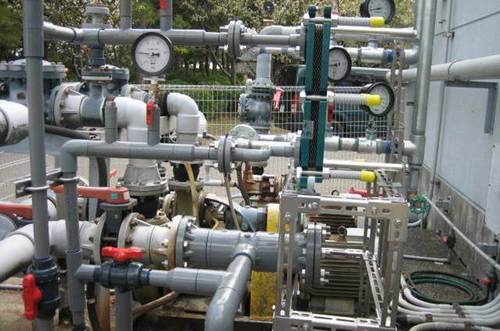November 13, 2013
Coastal Amusement Park in Japan Installs Seawater Heat Pump to Save Energy
Keywords: Disaster Prevention / Reduction Energy Conservation Local government Non-manufacturing industry University / Research institute
Yokohama Hakkeijima Inc., the company operating Yokohama Hakkeijima Sea Paradise, an amusement park with an aquarium located on the coast near Tokyo, and Tokyo University of Marine Science and Technology launched in April 2013 two new systems to save energy and reduce disaster risk.
As a member of Yokohama City's Yokohama Green Valley project aimed at promoting the reduction of greenhouse gas emissions and revitalizing the local economy, Yokohama Hakkeijima has been working to reduce greenhouse gas emissions through energy conservation. The company and the university have succeeded in reducing air-conditioning power consumption by 20 percent through the introduction of a heat pump in a part of the Aqua Museum facility of the aquarium. The heat pump works by taking advantage of the unique tendency of ocean water to stay at a rather stable temperature, between 10 degrees and 17 degrees Celsius, year-round. The commercial installation of air-conditioning equipment that uses seawater as a heat source is a rare occurrence worldwide. The company and the university also created a system for visualizing power consumption in the office building and the aquarium facility, contributing to a 10 percent reduction in power consumption.
For disaster risk reduction, they introduced a system for supplying electricity generated on a ship located in the Umi Farm ("ocean farm") area of the aquarium to land-based facilities during power disruptions and other emergencies. The system can power lights, televisions, and radio devices.



